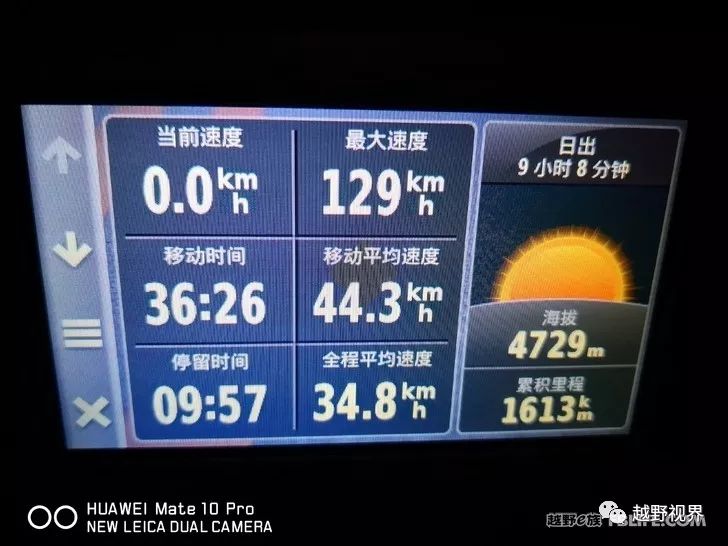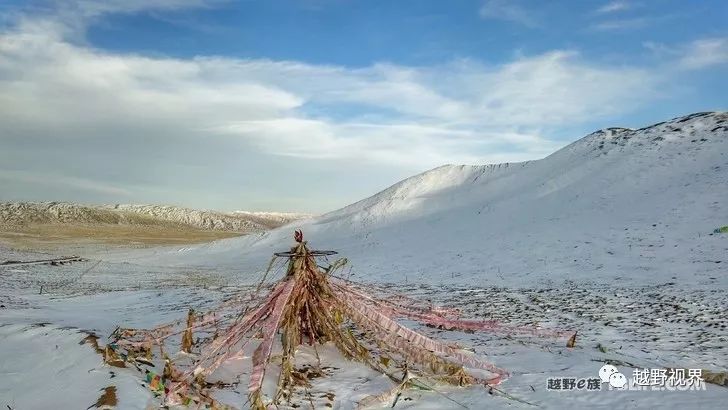Recommended by New Travel Industry: Wuzhen and Xitang are the two leading ancient towns in the south of the Yangtze River. However, when they first started to develop ancient town tourism, they were based on different motivations and faced completely different situations. Wuzhen is “forced to do nothing”, but Xitang is “unintentionally planted willows”. The difference in the initial conditions also leads to the difference in the development paths of the two later. This article comprehensively reviews the past and present of Wuzhen and Xitang, and explains the path patterns of the two, as well as the current trend of “going in the opposite direction”. The stories are worth reading.

Xitang Ancient Town
Xitang has been an economically strong county since ancient times
It is said that in March of the fourth year of Xuande in the Ming Dynasty (1429), Hu Gai, the Minister of Dali Temple, visited the south of the Yangtze River, and asked to designate Zeng County with a wide range of poems. On March 28 of the following year, the three townships of Qianshan, Yong’an, and Fengxian in the northeast of Jiaxing County and the parts of Xushan, Sixian, and Linrui townships were divided into Jiashan County.
But here comes the question, where is the county seat?
At that time, there were mainly two places participating in the competition, one was Weitang Town and the other was Xitang Town. Since the data indicators in all aspects of the two places are evenly matched, it was finally decided to call the soil to decide the winner. Where the soil is heavy, it is more suitable for building a city, so choose that place to be the county seat. As a result, it is said that the Weitang people played tricks and mixed water, which made the weight of the soil weighed heavier than that of Xitang, and won the ownership of the county.
This may be just a folklore, but it can also be seen that the economic strength of Xitang is actually comparable to that of the county.
In fact, until today, Xitang is still an economically strong town in Jiashan. And its economy is strong not because of tourism, but because of industry first. For example, the Dashun market town below Xitang is a famous town of buttons in China, and the well-known Foxconn, Fortis, and COFCO all have investment projects in Xitang. left Xitang instead of staying at the city level.

As for the ancient town tourism in Xitang, it is purely unintentional. At the end of the 1990s, tourism in the ancient towns of Zhouzhuang and Tongli next door has become very popular. At that time, a cadre of Jiashan County Cultural Bureau was invited to Zhouzhuang and Tongli. After returning, he found the chief official of Xitang at that time and suggested Xitang to develop the ancient town. In the end, he was beaten back, and the other party said: “What kind of tourism are you doing? It’s the business to attract two township enterprises for me.”
It can be seen that the ancient town tourism in Xitang did not enter the eyes of the local government at all at first. The reason why the brand of Xitang Ancient Town was able to start later was entirely thanks to the white-collar donkey friends in Shanghai. After 2000, with the popularity of private cars, self-driving tours began to rise among fashionable white-collar workers in Shanghai. Compared with later competing products such as Zhouzhuang, Tongli, and Wuzhen, Xitang is the closest to Shanghai. From Hongqiao to Xitang, it takes only 30 to 40 minutes by highway, so it was the first to enter the eyes of these petty bourgeoisie white-collar workers.
Later, Xitang had a very famous advertising slogan called “Xitang, a thousand-year-old ancient town where people live”, which actually came from the wave of donkey friends in Shanghai at that time. Because at that time, Zhouzhuang and Tongli had been developed for a long time, and the aborigines in Wuzhen were almost removed. The so-called ancient towns looked more like man-made scenic spots, lacking the smell of fireworks. However, because the government did not deliberately develop Xitang, the ancient town retains many original elements, such as a large number of aborigines, and the smell of fireworks in the morning and evening, which are very popular among travel friends.
After returning home, many travel friends wrote travel notes on forums and blogs, recommending Xitang, and some travel friends even stayed here and invested in opening the first batch of characteristic homestays in Xitang. It can be said that Xitang can be what it is today, firstly because of the group of donkey friends back then, and secondly thanks to the local government’s “eyes but no pearls”.
If the local government had consciously developed it like Zhouzhuang and Tongli, Xitang probably would not have been a “thousand-year-old town” long ago. Fortunately, the local government took a step back. When they came to their senses and realized the value of Xitang as an ancient town, the aborigines of Xitang had already made a lot of money by renting out houses, doing business on their own, and bringing people into scenic spots. Become a vested interest group in Xitang.
At this time, it is no longer possible for the local government to relocate all the aborigines out of the ancient town at a very cheap price like Wuzhen, and then enclose the ancient town for scenic development. This is not only the luck of Xitang and the people of Xitang, but also paves the way for the bottleneck encountered in the development of Xitang later.

Wuzhen, no choice
At the same time, Wuzhen, which was developed slightly earlier than Xitang, has embarked on a completely different road.
From the very beginning, Wuzhen had a clear goal and determined to make efforts in the direction of tourism development in ancient towns. The root cause of this difference is the economic foundation of the two places.
Unlike Xitang, which has always been the “Second Brother of Jiashan” (it was not until recent years that Yaozhuang was relegated to the third child), Wuzhen’s economy was very backward in the late 1990s. Not only did its economic aggregate rank last among all towns in Tongxiang, Moreover, there is a serious lack of pillar industries such as Puyuan (sweater) and Zhouquan (chemical industry) in the surrounding towns. Except for a dilapidated former residence of Mao Dun, it can be said that there is nothing. It was also in desperation that Wuzhen was forced to embark on the road of ancient town development, but it did not expect “a blessing in disguise”.

Wuzhen
Firstly, due to backwardness, it is necessary to fight a bloody road, so Wuzhen is serious about the development of the ancient town, and its goal is firm. At the same time, the development team of Wuzhen has not changed over the years, so the relevant planning is coherent and the vision is long-term; secondly, because the development is early and housing prices have not risen, the cost of relocating the aborigines is not high. Later, the unified planning and unified management of the scenic spot laid the foundation.
Of course, from the perspective of the aborigines, their profits are obviously not as good as those of the Xitang people who have their own property rights, so the people also complain a lot about Wuzhen officials. This is also understandable. Economic gaming is a normal state. Generally speaking, I still tend to stand on the side of protecting the interests of the people. However, since this article is about the development comparison of Wuzhen and Xitang, this issue will be put aside for the time being and will not be expanded. deep.
It should be said that in the early stages of development, Wuzhen is not as attractive as Xitang. In the early years, Wuzhen was like a man-made fake scenic spot, not as pyrotechnic and flavorful as Xitang.

Wuzhen Grand Theater
But what makes Wuzhen so special is that it is developing and building this scenic spot with care, so we can see that from the initial Mao Dun Literature Award settled in Wuzhen, to Mu Xin’s return to Wuzhen to settle down, and then to the creation of Wuzhen Theater Festival , Internet conferences… Every few years, new cultural elements and event highlights will be implanted in Wuzhen. The scope of the scenic spot has also expanded from East Gate to West Gate, and now a Wu Village has been created. Not only is the area getting bigger, but it can be said that it changes every year and changes every three years.
On the other hand, Xitang has almost stagnated in recent years. Apart from inviting Fang Wenshan to hold a Hanfu Cultural Festival every year for self-entertainment, Xitang is really lacklustre in terms of innovation. Even, due to the disorderly development of scenic spots, the overall quality is constantly declining. Even the Hanfu Cultural Festival is far less effective than the Wuzhen Drama Festival in enhancing the attractiveness of Xitang, increasing the flow of tourists and the income of the scenic spot.
This is because: First, most of the properties in the Xitang Scenic Area are privately owned by the aborigines, not in the hands of the Xitang Tourism Company, so the scenic area cannot make unified planning and rational layout for them.
Second, although the rent and price of Xitang Scenic Area are one price a year, it is so high that it is scary. Take the drinks in bars as an example. A bottle of Snow Beer can be sold for 70 yuan, almost catching up with the most high-end bars in Shanghai. But all these proceeds have gone into the pockets of the landlord, and the travel company has nothing to gain. For Xitang Tourism Company, only tickets are its main and most stable income. But at the same time, sanitation and security, including ticket collectors and boaters, must be borne by the scenic spot. So to be honest, Xitang Scenic Area really doesn’t have much money to invest in the improvement of the scenic spot.
Third, friends who have been to Xitang may find that the north and south sides of Xitang Scenic Area are surrounded by those old and new buildings in Xitang Township, built in the 1980s and 1990s, and the west is surrounded by a road that also has a county. The Pingli Highway (also known as Shanjiang Highway) that functions as a highway and a provincial highway is separated from the outside world. Therefore, it is difficult to expand the existing scenic spot a little bit like Wuzhen (of course, there is an opening in the east of Xitang, and Xitang is also making a big fuss about this opening), and through the expansion of the scenic spot, get more More space, implanting more commercial and cultural elements, thereby attracting more tourists and charging more tickets.
In fact, today’s Xitang has no distinction between low and peak seasons, and although the influx of a large number of tourists will increase the ticket revenue of the scenic spot, the additional expenses for security and sanitation will also increase significantly. , it is not cost-effective to convert. Because of this, every holiday, we always see a scene outside the Xitang scenic spot that is impossible to see in other places, that is, the scenic spot will take the initiative to post notices, warning that “the scenic spot is overcrowded, please go to other places to play “.
This is the status quo of Xitang and Wuzhen. Compared with the early years of “Xitang is delicious, Wuzhen is too fake”, the status of the two has been completely reversed now. So in the future, where will the “twin stars” of the ancient town in the south of the Yangtze River go?
“Travel” and excellent “production”
Wuzhen’s cultural and tourism industry was created on the basis of no other industrial foundation and a poor foundation, but now, following the footsteps of the Internet Conference, more and more Internet technology innovation companies have settled down. Especially in December 2017, just after the 4th Internet Conference concluded, Tongxiang City announced the “Strategic Plan for Science and Innovation Clusters on Wuzhen Avenue” which took 8 months to design.

According to the “Plan”, Wuzhen Avenue science and technology cluster area will take 1 km along both sides of Wuzhen Avenue as the planning control area, forming a spatial layout of “one axis, two cores, and four areas”.
“One axis”, that is, take Wuzhen Avenue as the main axis, coordinate the architectural landscape style along the line, and at the same time use the “Internet” as a way to strengthen the connection between the main platform carriers and elements in the north-south direction, and promote the formation of innovative scientific research, production and application, life and leisure. Industrial Avenue.
The “two cores” means that Wuzhen and Gaoqiao are the core, showcasing wisdom and vitality, giving full play to their respective leading roles along Wuzhen Avenue, and forming a pattern of Internet towns and ancient towns in Jiangnan water towns and modern new urban areas that echo each other at a distance.
“Four districts”, that is, from north to south, are divided into four functional areas: the Internet industry area, the fashion characteristic industry area, the livable smart new urban area, and the advanced manufacturing industry area, focusing on the Internet industry, fashion industry, high-end equipment manufacturing, and new materials. , Automobile key parts manufacturing and other advantageous industries, and introduce various high-end formats.
Moreover, the “Planning” also gives a specific timetable and mission statement. That is to say, by 2021, more than 80,000 Internet innovation and entrepreneurial talents will be gathered in the towns and streets along Wuzhen Avenue, and the regional GDP will exceed 80 billion yuan, accounting for more than 80% of Tongxiang City’s regional GDP. The investment in fixed assets will be 200 billion yuan in five years , the proportion of R&D expenditure in the region’s GDP exceeds 3%, and the output value of high-tech enterprises, the added value of the service industry, and the added value of the tourism industry all account for more than 80% of the city’s total.
Translated into adult words: In the future, Wuzhen will no longer be just an ancient town, nor will it only rely on tourism as the economic pillar. We will take the road of a higher Internet industry.
It is no wonder that in August before this, Tongxiang City adjusted some administrative divisions. The former Longxiang Sub-district and Xibang Village under the jurisdiction of Puyuan Town were placed under the jurisdiction of Wuzhen, which more than doubled the area of Wuzhen. For Wuzhen, these are of course huge benefits. It has greatly improved Wuzhen’s economic status in Tongxiang, comparable to or even surpassed traditional strong towns such as Chongfu, Puyuan, and Zhouquan.

It seems that it is time for observers to adjust their image of Wuzhen.
Contrary to Wuzhen’s “travel” and excellent “production”, Xitang belongs to “production” first and then “travel”. The north, south and west sides of Xitang are either separated by roads or surrounded by old towns. Fortunately, there is still a gap left in the east, and it is connected to a piece of water called Xiangfudang through a ten-mile harbor. At present, several cultural and tourism giants, including Songcheng and Hengtian, have successively settled down along Shiligang and around Xiangfudang, and some have already started construction. In addition, as far as I know, there are one or two predators who are also famous in the industry and will also settle in the Zixiang Fudang area.
So if you want to sum up the future of Wuzhen and Xitang in one sentence, then it is: Wuzhen, which started as a cultural tourism industry, may have a lower proportion of the cultural tourism industry in the future; The Xitang of the ship, cultural tourism and vacation may usher in an explosive period. Isn’t it paradoxical, is it another flip?




